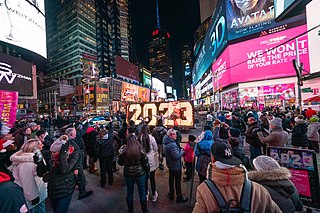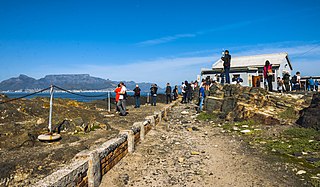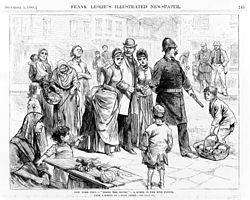
Tourism is travel for pleasure, and the commercial activity of providing and supporting such travel. The World Tourism Organization defines tourism more generally, in terms which go "beyond the common perception of tourism as being limited to holiday activity only", as people "travelling to and staying in places outside their usual environment for not more than one consecutive year for leisure and not less than 24 hours, business and other purposes". Tourism can be domestic or international, and international tourism has both incoming and outgoing implications on a country's balance of payments.

A tourist attraction is a place of interest that tourists visit, typically for its inherent or an exhibited natural or cultural value, historical significance, natural or built beauty, offering leisure and amusement.

A slum is a highly populated urban residential area consisting of densely packed housing units of weak build quality and often associated with poverty. The infrastructure in slums is often deteriorated or incomplete, and they are primarily inhabited by impoverished people. Although slums are usually located in urban areas, in some countries they can be located in suburban areas where housing quality is low and living conditions are poor. While slums differ in size and other characteristics, most lack reliable sanitation services, supply of clean water, reliable electricity, law enforcement, and other basic services. Slum residences vary from shanty houses to professionally built dwellings which, because of poor-quality construction or lack of basic maintenance, have deteriorated.

Favela is an umbrella name for several types of working-class neighborhoods in Brazil. The term, which means slum or ghetto, was first used in the Slum of Providência in the center of Rio de Janeiro in the late 19th century, which was built by soldiers who had lived under the favela trees in Bahia and had nowhere to live following the Canudos War. Some of the first settlements were called bairros africanos. Over the years, many former enslaved Africans moved in. Even before the first favela came into being, poor citizens were pushed away from the city and forced to live in the far suburbs.

Dharavi is a residential area in Mumbai, Maharashtra, India. It has often been considered to be one of the world's largest slums. Dharavi has an area of just over 2.39 square kilometres and a population of about 1,000,000. With a population density of over 277,136/km2 (717,780/sq mi), Dharavi is one of the most densely populated areas in the world.

A shanty town, squatter area or squatter settlement is a settlement of improvised buildings known as shanties or shacks, typically made of materials such as mud and wood. A typical shanty town is squatted and in the beginning lacks adequate infrastructure, including proper sanitation, safe water supply, electricity and street drainage. Over time, shanty towns can develop their infrastructure and even change into middle class neighbourhoods. They can be small informal settlements or they can house millions of people.

Disaster tourism is the practice of visiting locations at which an environmental disaster, either natural or human-made, has occurred. Although a variety of disasters are the subject of subsequent disaster tourism, the most common disaster tourist sites are areas surrounding volcanic eruptions.

Orangi is a municipality approximately 57 square kilometres (22 sq mi) in an area that forms much of the northwestern part of Karachi in Sindh, Pakistan. When grouped with the neighboring municipality of Baldia Town, the Orangi-Baldia population is estimated to be over 2.4 million. Orangi is the world's largest slum, with a population of 2.4 million, twice that of Mexico's Ciudad Neza, Mexico City and more than twice that of India's Dharavi, Mumbai.

New York City received a ninth consecutive annual record of approximately 65.2 million tourists in 2018, the busiest tourist city attraction, and one of the world's overall busiest tourist attractions, counting not just overnight visitors but anyone visiting for the day from over 50 miles away, including commuters. Overall the city welcomed 37.9 million visitors who stayed overnight in 2018, of whom 13.6 million were international. Major destinations include the Empire State Building, Ellis Island, the Statue of Liberty on Liberty Island, Broadway theatre productions, Central Park, Times Square, Coney Island, the Financial District, museums, and sports stadiums. Other major visitor activities include luxury shopping along Fifth and Madison Avenues; entertainment events such as the Tribeca Film Festival; Randalls Island music festivals such as Governors Ball, Panorama and Electric Zoo; and free performances in Central Park at Summerstage and Delacorte Theater. Many New York City ethnic enclaves, such as Jackson Heights, Flushing, and Brighton Beach are major shopping destinations for first and second generation Americans.
War tourism is recreational travel to active or former war zones for purposes of sightseeing or historical study. The term may be used pejoratively to describe thrill-seeking in dangerous and forbidden places. In 1988, P. J. O'Rourke applied the pejorative meaning to war correspondents.

Dev Patel is a British Indian actor and director. He began his career playing Anwar Kharral in the E4 teen drama Skins (2007). His breakthrough came with the leading role of Jamal Malik in Danny Boyle's drama Slumdog Millionaire (2008), for which Patel was nominated for the British Academy Film Award for Best Actor.

Maharashtra attracts tourists from other Indian states and foreign countries. It was the second most visited Indian state by foreigners and fifth most visited state by domestic tourists in the country in 2021. Aurangabad is the tourism capital of Maharashtra.
Social apartheid is de facto segregation on the basis of class or economic status, in which an underclass is forced to exist separated from the rest of the population. The word "apartheid", originally an Afrikaans word meaning "separation", gained its current meaning during the South African apartheid that took place between 1948 and early 1994, in which the government declared certain regions as being "for whites only", with the black population forcibly relocated to remote designated areas.

Slumdog Millionaire is a 2008 British drama film that is a loose adaptation of the novel Q & A (2005) by Indian author Vikas Swarup. It narrates the story of 18-year-old Jamal Malik from the Juhu slums of Mumbai. Starring Dev Patel in his film debut as Jamal, and filmed in India, it was directed by Danny Boyle, written by Simon Beaufoy, and produced by Christian Colson, with Loveleen Tandan credited as co-director. As a contestant on Kaun Banega Crorepati, an Indian-Hindi version of Who Wants to Be a Millionaire?, Jamal surprises everyone by answering every question correctly, winning ₹2 crore. Accused of cheating, he recounts his life story to the police, illustrating how he was able to answer each question.

South Africa is a tourist destination with the tourist industry accounting for 2.34% of GDP in 2019 followed by a sharp drop in 2020 to 0.81% of GDP due to lack of travel caused by the COVID-19 pandemic. The official marketing agency for the country South African Tourism is responsible for marketing South Africa to the world. According to the World Travel & Tourism Council, the tourism industry directly contributed ZAR 102 billion to South African GDP in 2012, and supports 10.3% of jobs in the country. The official national marketing agency of the South African government, with the goal of promoting tourism in South Africa both locally and globally is known as South African Tourism.
Housing in India varies from palaces of erstwhile maharajas to modern apartment buildings in big cities to tiny huts in far-flung villages. The Human Rights Measurement Initiative finds that India is doing 60.9% of what should be possible at its level of income for the right to housing.
The film Slumdog Millionaire, which won eight Academy Awards in 2009, has been subjected to a number of criticisms, notably regarding how it portrays Indian society and alleged exploitation of some of the actors.
The 2008 film Slumdog Millionaire has been a subject of discussion among a variety of people in India and the Indian diaspora. Some film critics have responded positively to the film. At the same time, others objected to issues such as Jamal's use of British English or the fact that similar films by Indian filmmakers have not received equal recognition. A few notable filmmakers such as Aamir Khan and Priyadarshan have been critical of the film. Author and critic Salman Rushdie argues that it has "a patently ridiculous conceit."
The 21st Century Leaders was founded in 2003, by Charlotte di Vita MBE, a Goodwill Ambassador to the Nelson Mandela Children's Fund. The 21st Century Leaders programme was launched by Trade plus Aid, British Charity Registration 1061376. Trade plus Aid is an ethical trading organisation established in order to create environmentally sound and economically viable means to alleviate poverty in impoverished communities, initially in Africa.
ACORN International is a federation of member-based community organizations that is active in Cameroon, Canada, the Czech Republic, England, France, Honduras, India, Ireland, Italy, Kenya, Peru, Scotland, Tunisia, the United States, and Wales. The group's global membership numbers are currently at approximately 250,000 members.
















